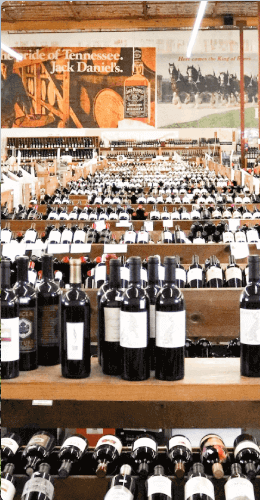Wine Region Profile: Champagne, France

Champagne, a prestigious and renowned wine region in northeastern France, captivates wine enthusiasts with its sparkling wines of unparalleled finesse and effervescence. In many ways, this is the pinnacle of French wine. Nestled in the picturesque countryside, Champagne is synonymous with celebration and luxury. Let's explore the captivating history, sub-appellations, and quality levels that define this iconic region.
The History
Champagne's winemaking heritage dates back centuries, tracing its roots to the Roman era. However, it was in the 17th century that Champagne truly rose to prominence. The region's unique terroir and climatic conditions posed challenges for winemakers. The cool climate and chalky soils provided a perfect environment for the cultivation of Chardonnay, Pinot Noir, and Pinot Meunier—the holy trinity of Champagne grapes.
The true turning point in Champagne's history came with the discovery of the méthode champenoise, a labor-intensive technique involving secondary fermentation in the bottle. This involves adding sugar to the already fermented wine to prompt a fermentation in-bottle. This process gave birth to the iconic bubbles that define Champagne today. From then on, the region's reputation soared, and Champagne became synonymous with luxury and celebration worldwide.
Sub-Appellations and Quality Levels
Champagne is organized into several sub-appellations known as AOCs (Appellations d'Origine Contrôlée), each with its unique characteristics and regulations. It’s good to know about them before you order wine online. These sub-appellations help delineate the distinct terroirs and styles found within the region.
- Montagne de Reims: Located to the south of Reims, this sub-appellation is famous for its exceptional Pinot Noir. The vineyards here are perched on the slopes of the Montagne de Reims, where the grapes benefit from optimal sun exposure and chalky soils.
- Côte des Blancs: Situated to the south of Épernay, the Côte des Blancs is renowned for its outstanding Chardonnay vineyards. The region's south-facing slopes and limestone-rich soils create the ideal conditions for producing elegant and vibrant Blanc de Blancs Champagnes.
- Vallée de la Marne: Following the meandering course of the Marne River, this sub-appellation boasts vineyards planted primarily with Pinot Meunier. The grapes thrive in the region's clay and sandy soils, resulting in rich and fruity expressions in Champagne.
- Côte des Bar: Located in the southernmost part of Champagne, the Côte des Bar stands out for its warmer climate and distinctive terroir. This sub-appellation is known for producing characterful Pinot Noir-dominant Champagnes with a unique expression.
In addition to the sub-appellations, Champagne also has various quality levels that determine the style and aging requirements of the wines. Here’s some examples from your favorite wine store USA.
- Non-vintage Champagne: These blends capture the house style and are a reflection of the consistency and expertise of the Champagne producer. They offer a harmonious combination of fresh fruitiness and subtle complexity. Consider the Laurent-Perrier Ultra Brut Champagne, for example.
- Vintage Champagne: Crafted from grapes harvested in exceptional years, vintage Champagnes showcase the unique characteristics of a particular harvest. They often exhibit greater depth, complexity, and aging potential. A great choice is the 1997 Raymond Lelarge Champagne Brut.
- Prestige Cuvées: These are the crème de la crème of Champagne, representing the pinnacle of craftsmanship and excellence. Prestige cuvées are produced in limited quantities from the best grapes and often undergo extensive aging and special blending to achieve extraordinary depth and refinement. A good example would be the 2012 R.H. Coutier Extra Brut Grand Cru Champagne
Champagne's active winemakers lend this region a distinct identity, from the historic discovery of the méthode champenoise to the meticulous craftsmanship that characterizes its wines. Today, Champagne continues to push boundaries, with winemakers innovating and refining their techniques to ensure the utmost quality and consistency, which can you taste for yourself after you buy wine online.
So, the next time you raise a glass of Champagne to toast a special occasion, take a moment to appreciate the rich history and terroir that contribute to the magic in every bubble. Cheers to the effervescent wonders of Champagne, a region that embodies the artistry of winemaking and the spirit of celebration.
Please read our other informative articles about wine and leave us a comment below now!


















Leave a comment